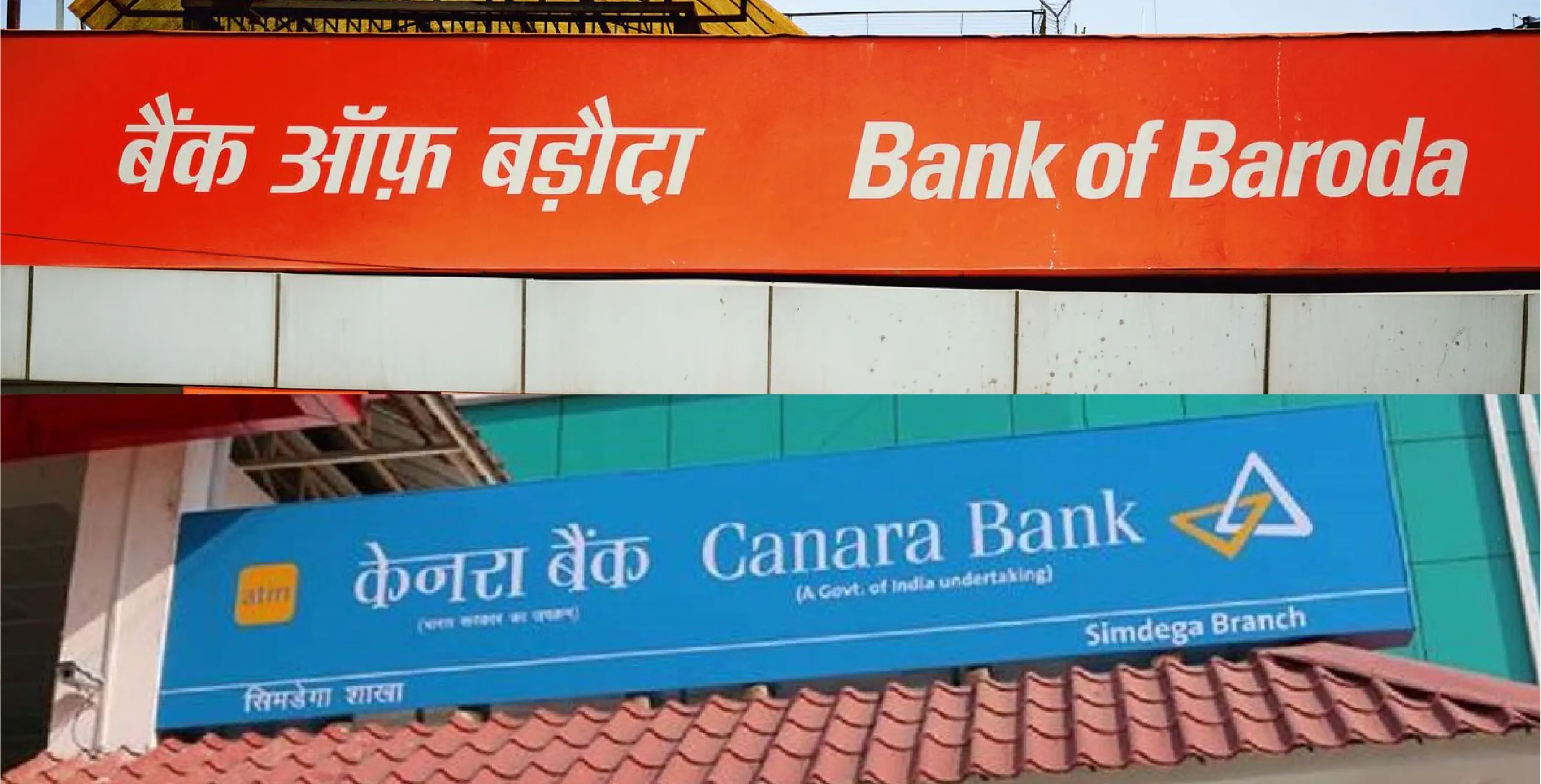
Author
LoansJagat Team
Read Time
4 Min
28 Jul 2025
Bank Of Baroda, Canara Bank Let Go Of ₹54,000 Crore Loans For Margin Safety
Public banks move away from ₹54,000 crore loans to protect profits as rates turn unfavourable
How far can banks go to maintain their margins when interest rates are falling quickly? In the first quarter of this financial year, two of India’s largest public sector banks, Bank of Baroda and Canara Bank, chose to step away from loans worth a massive ₹54,000 crore.
This was not because of defaults or repayment concerns. It was a planned decision to protect profitability as lower repo rates led to reduced lending rates.
Loan Exit to Preserve Profit Margins
As per an Economic Times report from July 25, 2025, Bank of Baroda exited loans worth about ₹42,000 crore in the first quarter, while Canara Bank reduced its loan book by ₹12,000 crore. Together, they moved out of ₹54,000 crore in loans, mainly to prevent a hit to their net interest margins, or NIMs.
For Bank of Baroda, the cut came from loans given to NBFCs and PSUs. Canara Bank did something similar, cutting down its corporate lending and turning attention to higher-return segments instead.
This shift becomes clearer when you look at their margin numbers. BoB’s NIM slipped from 2.98% to 2.91% over the quarter. Canara Bank saw a bigger drop from 2.73% to 2.55%. In normal times, such falls are uncommon and highlight the growing strain on the banks’ profits.
Why the Banks Let Go: Falling Rates, Rising Pressure
Between February and July 2025, the Reserve Bank of India cut the repo rate by 100 basis points. Lending rates dropped quickly, and large borrowers like PSUs started asking banks to reduce interest on existing loans.
But while lending rates fell, deposit rates didn’t come down as fast. This puts pressure on the difference between what banks earn and what they pay, known as the spread.
To avoid further damage to their earnings, Bank of Baroda and Canara Bank decided to exit some of these low-return loans. Even if it meant lower growth in the short term, they chose to protect profitability.
In an investor call in early July, Bank of Baroda’s top management said that continuing with these loans could have pulled their margins below 2.85 per cent, a level they were not comfortable with.
Shift Toward Fee-Based and Retail Income
With interest income under pressure, both Bank of Baroda and Canara Bank are focusing more on fee-based earnings and retail lending.
In the April 2025 to June 2025 quarter, Canara Bank earned ₹1,248 crore just from selling priority sector loan certificates.
These certificates allow banks to meet lending targets for priority sectors without actually giving out the loans, which also means lower risk.
Bank of Baroda, on the other hand, is stepping up its retail game. Retail loans like home, car, and personal loans now make up nearly 50% of its total lending. This change was already hinted at in BoB’s Q4 FY25 results, where the bank said it wants more stable and better-yielding income.
Fee-Based Earnings – Q1 FY26 (Canara Bank)
- Commission Income: ₹1,248 crore
- Share in Total Income: 11.6%
BoB also reported a 24.3% increase in non-interest income in Q4 FY25, signalling early movement toward alternative income lines even before the rate environment changed.
Regulatory Backdrop and Margin Guidelines
This shift by the banks also ties in with the Reserve Bank of India’s margin rules. Banks need to keep a safety margin based on the type of security and the risk level. For example, the RBI says banks must maintain a margin of 50% if shares are pledged in physical form and 25% for demat shares.
Many corporate loans, especially large ones, were giving very low returns after adjusting for risk. So, moving out of such loans seems to be part of a bigger change in how banks are handling credit risk.
If someone offers paper shares as security, banks must keep aside half the loan amount as a buffer. For digital shares, the buffer is smaller, just one-fourth.
For regular business loans backed by security, the required margin changes depending on how risky the loan is.
Conclusion
The real impact of these loan exits will be seen in the coming quarters. With more rate cuts likely, banks may focus on earning through fees or adjust deposit rates to protect profits. Retail loans might also get cheaper as competition grows.
All eyes will be on the RBI’s October 2025 policy for the next big move. BoB and Canara Bank have taken bold steps, but the real challenge is growing their business without hurting returns.
About the Author

LoansJagat Team
We are a team of writers, editors, and proofreaders with 15+ years of experience in the finance field. We are your personal finance gurus! But, we will explain everything in simplified language. Our aim is to make personal and business finance easier for you. While we help you upgrade your financial knowledge, why don't you read some of our blogs?

Quick Apply Loan
Subscribe Now
Related Blog Post

LoansJagat Team • 10 Jun 2025

LoansJagat Team • 06 Jun 2025

LoansJagat Team • 30 Aug 2025